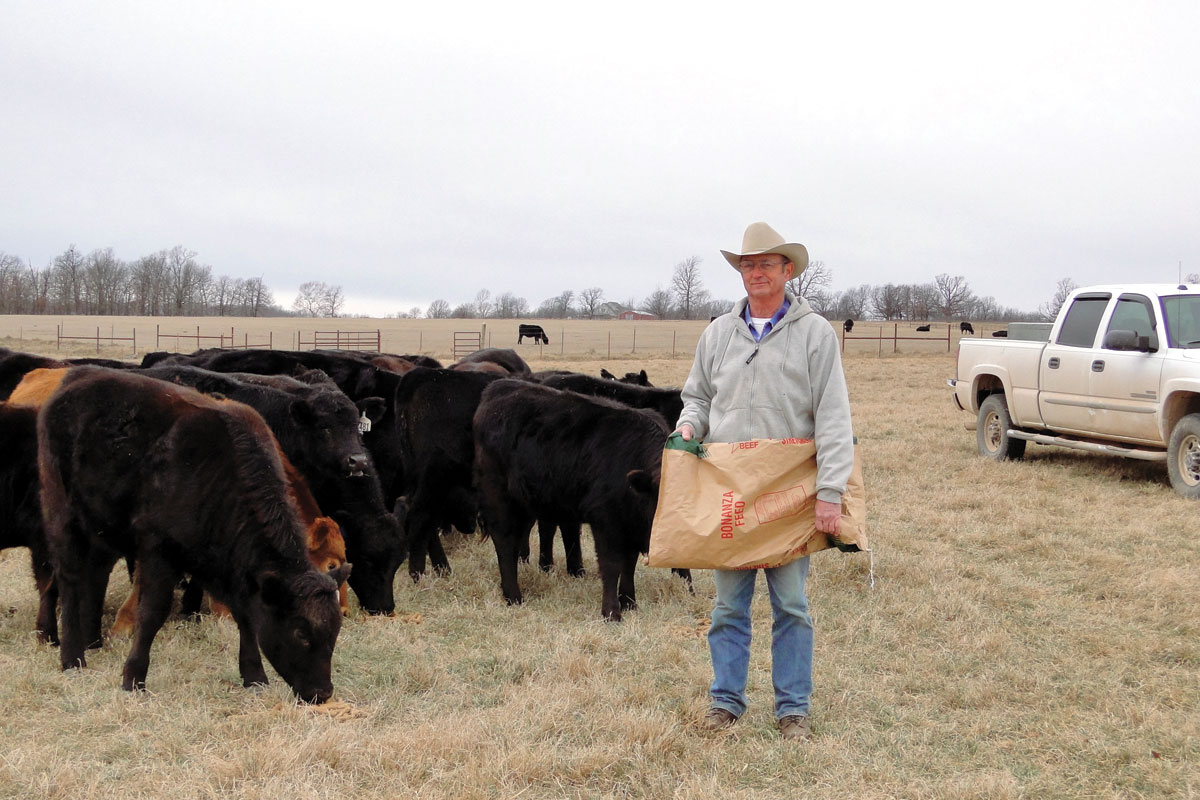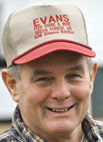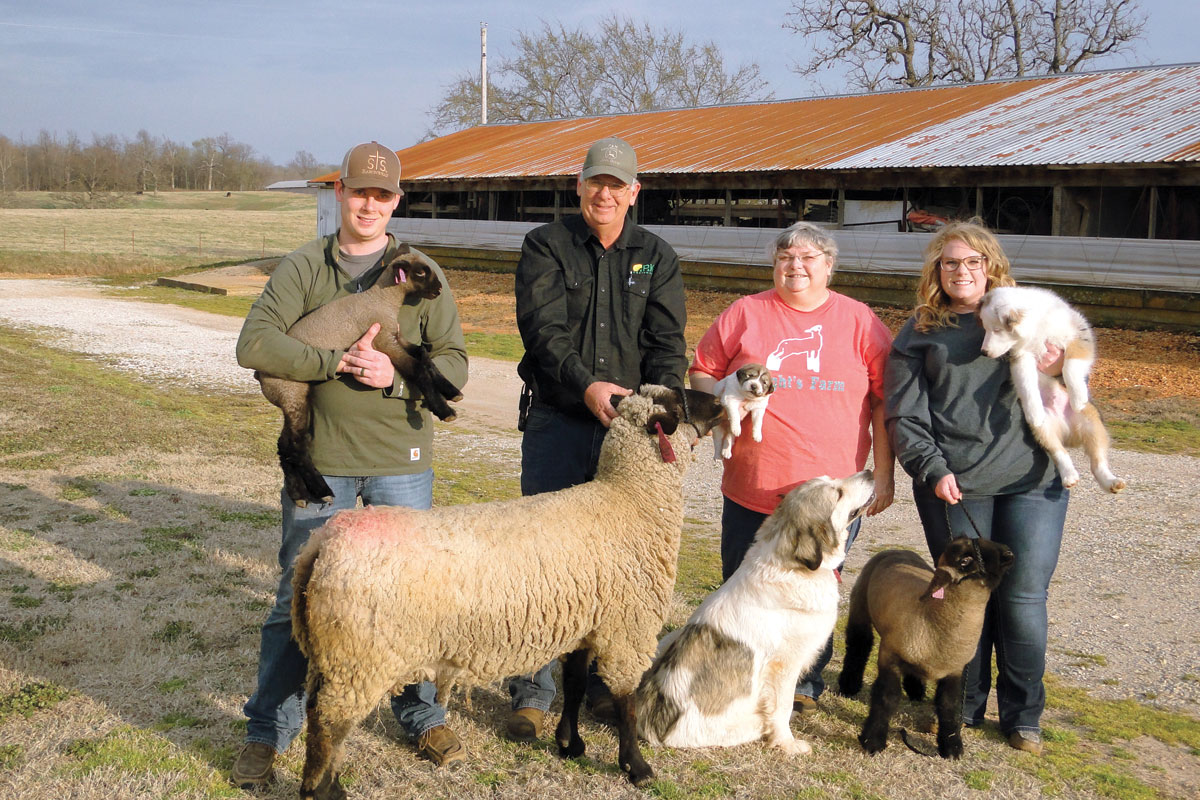
Larry Eaton finds the breed to have good maternal traits, solid confirmation
Wisdom comes from many sources. These include childhood experiences, adult experiences often produced through trial and error, reading to keep up with the latest advancements, and finally selecting those advancements that adapt to a particular lifestyle or operation.
Larry Eaton of Sulphur Springs, Ark., takes advantage of all of those sources of wisdom. From his father he learned that taking good care of cattle is the key to the success of a commercial herd. Among many other things, he taught himself through trial and error how to build a good pond.
In addition, he is constantly reading about advancements, such as DNA testing and chooses from the available sources what fits his operation. An example is he learned that AI is not best for his operation because he runs it by himself and the process is too time consuming. Through reading followed by studied application, Larry also discovered the best breed for him was the Balancer, a cross of Gelbvieh and Angus.
Until his retirement in 2011, Larry worked as a machinist and his wife Sue worked in the Walmart corporate offices. The couple has raised cattle since 1980 when they purchased their first 73 acres and built their home, later adding a shop, hay barn, equipment storage and four sets of cattle pens.
They celebrated their 50th wedding anniversary in 2017 and have lives full of family with three daughters and eight grandchildren. Two of the daughters, Debbie and Kelly, are teachers while Tammy is a personal trainer.
Sue, who retired five years ago, does office work in her spare time, but spends most of her days happily providing daily care for 2-year-old grandson Baxter while Kelly teaches in Decatur.
“Even though my involvement with the cattle is minimal, I deeply appreciate living in the country because it is so peaceful in addition to providing a perfect place to care for Baxter,” Sue said.
“My future plan was to have something to do, and I think I have more than accomplished that by running this farm by myself,” Larry said. “Nonetheless, I always save time for pheasant hunting in South Dakota and quail hunting in Kansas.”
By definition, a Balancer must have between 25 to 75 percent Gelbvieh bloodlines and is considered an offshoot of the Gelbvieh breed. Larry was led to this breed because he was having difficulty finding high-quality commercial animals.
After studying trade magazines, Larry found the Gelbvieh/Angus cross produces few birthing issues, high fertility, good milkability and solid confirmation on a medium frame, all of which leads to a meaty calf. Nine years ago, Larry changed his herd to Balancers and now drives just over 100 miles to purchase high quality Balancer bulls. Unlike some cattlemen who select for particular EPD qualities, Larry believes middle-of-the-road EPDs produce the most well-rounded and productive cattle and that DNA testing will increase the accuracy of prediction data about progeny better than ever before.
“A cow that gives too much milk is hard to keep in shape and doesn’t breed back well,” Larry explained.
The Eaton ranch is comprised of 635 owned acres, with 90 acres set aside for his hay needs with that acreage typically providing 700 round bales annually. Larry also leases 150 additional pasture acres. The total acreage supports what Larry believes to be his maximum herd size of 200 mommas and five bulls, with pastures large enough so each of his seven herds never needs to be rotated, an important consideration when working as a team of one.
Larry fertilizes with both litter and commercial fertilizer, but finds litter hard to get as well as expensive since most of it is sent out of the country. He also broadcast sprays for weeds in the spring and spot sprays for thistles as needed. The grasses are half Bermuda and half fescue with very little clover.
“I’ve tried clover. When the weather is agreeable, clover tends to take over; when the land gets dry, bare spots open so I simply don’t mess with it,” Larry said.
While the cattle are mostly grass fed, they are also provided with loose mineral and salt, as well as range cubes for added protein and to make leading them to working areas using a 4-wheeler easy. Larry also feeds cubes to heifers to get used them to people, as well as to bulls as needed for breeding recovery. He finds the cubes convenient because they are spread on the ground, which means no bunk is necessary and no waste occurs. He also creep feeds calves from first time heifers.
Cattle are additionally supported by typical health protocols, including a vaccination program and worming. Larry prefers combining pour on and drenching because test results indicate 99.7 percent worm control and the pour on control lice. Larry has a spring and fall breeding program and sells his calves at weaning in June and late November at the Benton County Sale Barn in Siloam Springs, with an average steer weight of 676 pounds. While Cody Vaughn is the current manager, Larry has sold calves there for 30 years because he feels he has always been treated very well.
Larry’s breeding program is now three generations deep and he is in the process of improving his genetics to produce more uniform calves. This year, he saved 60 heifers and is using them as replacements for cows that are culled for udder issues, disposition and poor fertility. He will continue the replacement program as part of his genetic development before he begins selling heifers as well. Because of the two breeding seasons, five bulls provide enough opportunity for genetic variety and stability.
“The biggest change through the years has been the gifts of technology and university study. Everything is more scientific which means today’s cattle are more high performance and, like a hot rod, require more highly specified routine care especially in the areas such as nutrition and health protocols,” Larry said.






